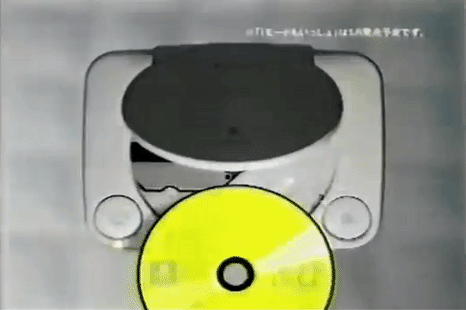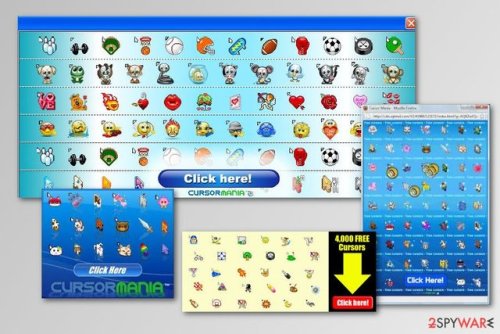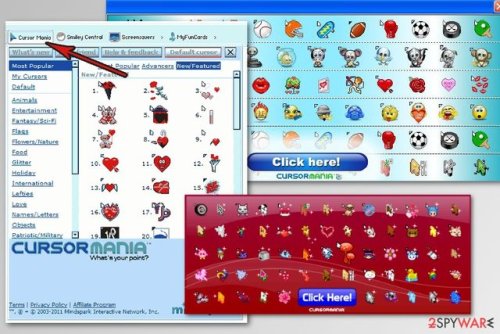Tres-4b-blog - ✰

More Posts from Tres-4b-blog and Others









Custom cursor malware that destroyed your computer in 2008 and got you yelled at by your mom moodboard










Not Only Didn’t We Find Water On An Earth-Like Exoplanet, But We Can’t With Current Technology
“Over the past few decades, astronomers have uncovered thousands of new exoplanets. Some of them are rocky; some are temperate; some have water. However, the idea that exoplanet K2-18b is rocky, Earth-like, and has liquid water is absurd, despite recent headlines. Light filters through K2-18b’s atmosphere when it passes in front of its star, enabling us to measure what’s absorbed. Based on those absorption lines, the presence of many chemicals can be inferred, including water. K2-18b is, truly, the first known habitable-zone exoplanet to contain water. However, it is not rocky; its mass and radius are too large, necessitating a large gas envelope around it.”
How incredible was that report that came out last week: the first Earth-like, rocky exoplanet with liquid water on its surface has been discovered! If it were true, it would be incredible. Well, what we did find is still pretty remarkable, but it’s very different from what you’ve likely heard.
We did find water on the exoplanet in question, K2-18b, but only in the vapor phase and only in the atmosphere.
The exoplanet is closer to Earth in terms of mass and radius than any other with water on it, but the planet is still too massive and large to be rocky. It must have an envelope of hydrogen and helium, and both have had their presence detected.
If we want to find atmospheric biosignatures around Earth-like worlds, we need better observatories. Let’s build them! Here’s the real story.
2019 April 28
All of Mercury Image Credit: NASA/JHU Applied Physics Lab/Carnegie Inst. Washington
Explanation: Only six years ago, the entire surface of planet Mercury was finally mapped. Detailed observations of the innermost planet’s surprising crust began when the robotic have been ongoing since the robotic MESSENGER spacecraft first passed Mercury in 2008 and continued until its controlled crash landing in 2015. Previously, much of the Mercury’s surface was unknown as it is too far for Earth-bound telescopes to see clearly, while the Mariner 10 flybys in the 1970s observed only about half. The featured video is a compilation of thousands of images of Mercury rendered in exaggerated colors to better contrast different surface features. Visible on the rotating world are rays emanating from a northern impact that stretch across much of the planet, while about half-way through the video the light colored Caloris Basin rotates into view, a northern ancient impact feature that filled with lava. Recent analysis of MESSENGER data indicates that Mercury has a solid inner core.
∞ Source: apod.nasa.gov/apod/ap190428.html

Ganymede global geological map and global image mosaic.
USGS Astrogeology Science Center.
-
 harleenquinnzel5 liked this · 2 months ago
harleenquinnzel5 liked this · 2 months ago -
 palerose reblogged this · 3 months ago
palerose reblogged this · 3 months ago -
 milkyangel reblogged this · 3 months ago
milkyangel reblogged this · 3 months ago -
 reblogagainandagain reblogged this · 5 months ago
reblogagainandagain reblogged this · 5 months ago -
 reblogagainandagain liked this · 5 months ago
reblogagainandagain liked this · 5 months ago -
 dualdevastation reblogged this · 5 months ago
dualdevastation reblogged this · 5 months ago -
 mychemicalromancerx reblogged this · 5 months ago
mychemicalromancerx reblogged this · 5 months ago -
 blacksuitinparadise reblogged this · 5 months ago
blacksuitinparadise reblogged this · 5 months ago -
 blacksuitinparadise liked this · 5 months ago
blacksuitinparadise liked this · 5 months ago -
 azuki-v reblogged this · 5 months ago
azuki-v reblogged this · 5 months ago -
 azuki-v liked this · 5 months ago
azuki-v liked this · 5 months ago -
 roquenrrow reblogged this · 5 months ago
roquenrrow reblogged this · 5 months ago -
 chetverge reblogged this · 5 months ago
chetverge reblogged this · 5 months ago -
 cuteminiskirt liked this · 5 months ago
cuteminiskirt liked this · 5 months ago -
 13fawn reblogged this · 5 months ago
13fawn reblogged this · 5 months ago -
 yougoththis reblogged this · 5 months ago
yougoththis reblogged this · 5 months ago -
 yougoththis liked this · 5 months ago
yougoththis liked this · 5 months ago -
 goldenshibe liked this · 5 months ago
goldenshibe liked this · 5 months ago -
 whoevenisemerald liked this · 5 months ago
whoevenisemerald liked this · 5 months ago -
 knowledgeiskingg liked this · 5 months ago
knowledgeiskingg liked this · 5 months ago -
 bpdbby2 liked this · 5 months ago
bpdbby2 liked this · 5 months ago -
 spiritblo0m reblogged this · 5 months ago
spiritblo0m reblogged this · 5 months ago -
 nothingamazing reblogged this · 5 months ago
nothingamazing reblogged this · 5 months ago -
 nothingamazing liked this · 5 months ago
nothingamazing liked this · 5 months ago -
 onlinewarrior reblogged this · 5 months ago
onlinewarrior reblogged this · 5 months ago -
 onlinewarrior liked this · 5 months ago
onlinewarrior liked this · 5 months ago -
 thirdworldgf liked this · 5 months ago
thirdworldgf liked this · 5 months ago -
 lostfreeman liked this · 5 months ago
lostfreeman liked this · 5 months ago -
 scorpiotribe reblogged this · 5 months ago
scorpiotribe reblogged this · 5 months ago -
 thuggedoutataraxia reblogged this · 5 months ago
thuggedoutataraxia reblogged this · 5 months ago -
 thuggedoutataraxia liked this · 5 months ago
thuggedoutataraxia liked this · 5 months ago -
 digitalhunk liked this · 5 months ago
digitalhunk liked this · 5 months ago -
 destabastet liked this · 5 months ago
destabastet liked this · 5 months ago -
 rumbustious-backhander liked this · 5 months ago
rumbustious-backhander liked this · 5 months ago -
 horse-ebooks liked this · 5 months ago
horse-ebooks liked this · 5 months ago -
 skeletron1091 reblogged this · 5 months ago
skeletron1091 reblogged this · 5 months ago -
 woollamb reblogged this · 5 months ago
woollamb reblogged this · 5 months ago -
 woollamb liked this · 5 months ago
woollamb liked this · 5 months ago -
 nintengu reblogged this · 5 months ago
nintengu reblogged this · 5 months ago -
 abel-gayble reblogged this · 5 months ago
abel-gayble reblogged this · 5 months ago -
 innnermost liked this · 5 months ago
innnermost liked this · 5 months ago -
 toad200 liked this · 5 months ago
toad200 liked this · 5 months ago -
 raven-haired-sephiroth liked this · 5 months ago
raven-haired-sephiroth liked this · 5 months ago -
 siluetal liked this · 5 months ago
siluetal liked this · 5 months ago -
 drunkchu reblogged this · 5 months ago
drunkchu reblogged this · 5 months ago -
 foreverdusk liked this · 5 months ago
foreverdusk liked this · 5 months ago




